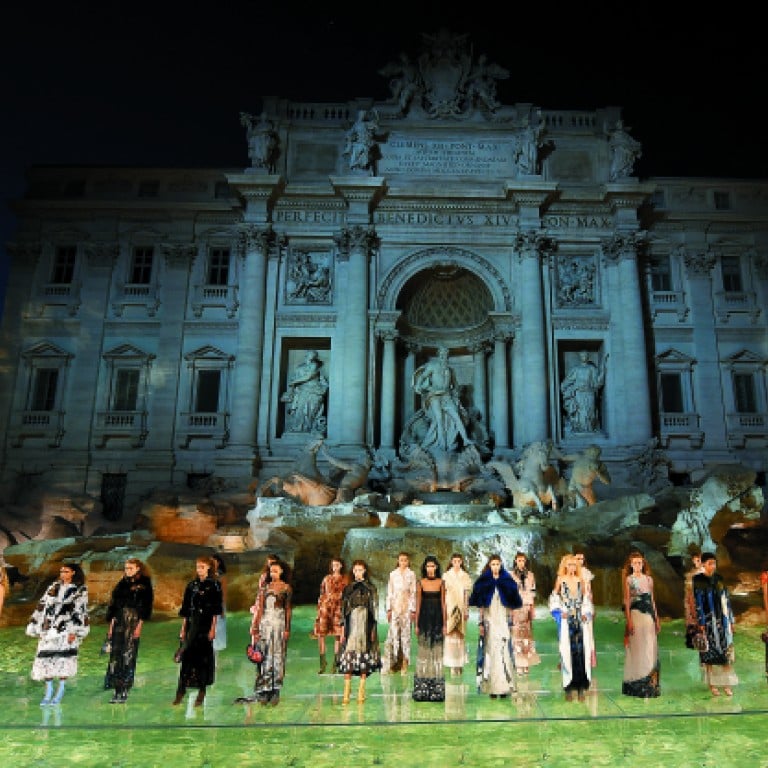Why Tod's renovated the Colosseum, and why Bulgari repaired the Spanish steps, while Fendi threw millions into a fountain

Italian luxury brands show their devotion to tradition and heritage by helping restore famous monuments
Fendi CEO Pietro Beccari's wish was granted last month when the Italian luxury maison showed its latest haute couture in Rome. Models marched across a transparent runway over the capital's Trevi Fountain, which had been freshly restored, thanks to the brand's generous €2.5million (HK$21.4 million) donation. Surely, that was more than a few coins tossed into the iconic monument.
"It's beyond anyone's imagination - definitely, a dream came true for me," says Beccari in his office on top of the brand's headquarters in the Palazzo della Civiltà Italiana, a monumental building described by locals as the "Square Colosseum".
Fendi is the latest of several luxury brands to have restored heritage monuments, and mainly in Italy, which has the most Unesco World Heritage Sites in the world, and is where many luxury fashion houses are based.
A few weeks earlier, Tod's Group unveiled its first-phase restoration of the Colosseum, a five-year project that cost the brand over €25 million (HK$214 million) but led to the cleaning of the monument's archways and façades, and the renovation of over 10,150 square metres of space. Distinguished guests attended the unveiling gala, including Italian Prime Minister Matteo Renzi and Culture Minister Dario Franceschini.

Tod's CEO Diego Della Valle says the brand's donation was money well-spent.
"I'm a very proud Italian, and my group too," he says. "It's because of love for one of the most important Italian monuments - representing Italy all around the world. When we are able to contribute, why not?"
Several luxury brands have followed Tod's and Fendi's philanthropic path. One of the incentives that contribute to the recent surge of brands' collaborations is Italy's tax breaks. In July 2014, its government introduced the Art Bonus tax cut and passed legislation last year to allow business or individual donors to cultural institutions to claim a tax credit - equal to 65 per cent of their charitable contributions.
"It's not about who has made the biggest donation or who started the first one," Della Valle says. "It's about the message we send. It's a generous approach that we have taken and I hope people will follow what we have done. The next step for businessmen around the world is to do many things for the others, especially when the company is strong."